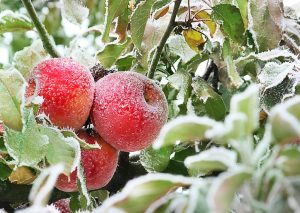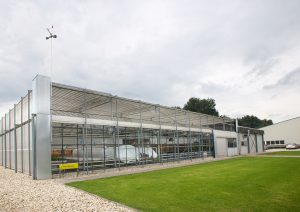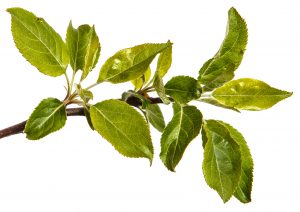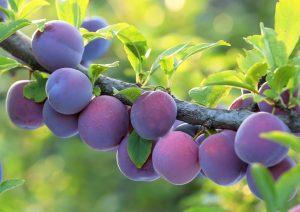
Predicting bud-break
Do chill units tell us anything? By Anna Mouton.
The idea behind chill models is to figure out what trees will do in spring. Will they wake up smartly and crack on with flowering? Or will they linger over bud-break and need a rest-breaking agent to get them going? Knowing whether trees experienced sufficient chill during winter should give growers the answer — in theory.
“We calculate chill units, but, frankly, we don’t always know what value chill models have,” admits Prof. Wiehann Steyn, general manager at Hortgro Science, “because we don’t know whether they really correlate with the rest-breaking behaviour of the trees.” A project aimed at resolving this uncertainty was launched by Hortgro in 2019.
Counting the cold
The importance of cold temperatures in both inducing and lifting dormancy is not disputed. Most stone- and pome-fruit growers in areas with warm winters are acutely aware of the problems that follow insufficient chill. Growers mostly rely on chemical rest-breaking agents to manage these issues. But correct application of these agents depends on foreknowledge — how strong will bud-break be in spring?
“You expect more problems in years with few chill units compared to years with many,” says Steyn, “and that usually holds true. But there are some years where you have relatively few chill units and bud-break is better than you expected. And other years where chill was okay, but bud-break not as good as you thought it would be.”
“You can’t just focus on how much chill you had throughout winter,” explains Dr Esmé Louw of the Department of Horticultural Science at Stellenbosch University. “It also depends when you had that chill — the autumn and spring temperatures. If you’re in a warm area, those shoulder seasons will make a difference.”
Louw is one of the leaders of the new project, together with Dr Iwan Labuschagne, of independent cultivar evaluation company Provar. She believes that too much attention to chill models can be a distraction. “What really matters is bud-break — what flowers you’ll have and what harvest you’ll have. We need to measure the plant’s response and try to link it to what came before.”
Steyn agrees. “We measure cold units every single year, but no one keeps track of rest-breaking. With a good data set we could correlate rest-break with the different chill models to see to what extent the chill models describe what we observe. We could even potentially improve the models.”
Building a data set
The database Steyn describes is exactly what the new phenophase-temperature project will establish. The project began in 2019 and is set to run until 2025. Temperatures from autumn through to spring will be collected, as will data on bud-break patterns of commercial apple and plum trees.
One part of the project will monitor mature trees in existing orchards in areas with contrasting climates. For plums, a Laetitia and an Angeleno orchard were selected in both Franschhoek and Robertson. For apples, a Golden Delicious and a Granny Smith orchard were selected in both Elgin and the Koue Bokkeveld.
Another part of the project will monitor young trees that were planted for adaptability trials. These trees were established on the Pro-Hort evaluation sites in 2019. Ten plum cultivars covering the spectrum of early to late flowering are on sites in Paarl, Robertson, and the Koue Bokkeveld. Ten apple cultivars covering the spectrum of low to high chill requirement are on sites in Elgin, Robertson, and the Koue Bokkeveld.
“We’ll be seeing whether bud-break was protracted, or condensed, and what the percentage bud-break was,” says Louw, “and then we’ll connect this to temperature.” The researchers plan to record phenological stages such as bud formation, leaf drop, bud-swell, bud-break, and different flowering phases, including opening of the first flower, full-bloom, and end of bloom.
The first year of the project was a trial run to test out and refine different data collection strategies and systems. Data collection begins in earnest this spring.
Putting models to the test
Temperature data from the different trial sites will be run through existing chill models — chill hours, Utah, Infruitec, and dynamic — to examine the correlation between what the models predict and what the trees do.
“To what extent do chill models describe your observations?” asks Steyn. “Which model works best for which area? And for which cultivars?” The project will be drawing on the expertise of Prof. Eike Luedeling, who leads the Horticultural Sciences Group within the Institute of Crop Sciences and Resource Conservation at the University of Bonn. Luedeling is internationally recognised for his work on modelling of temperature effects in fruit trees.
Most South African growers currently use either the Utah or the Infruitec models. “If the dynamic model is better, then we need to shift to that,” says Steyn. “And if some of the adaptations that Luedeling has done give even better results, we must use those. But for now, we don’t know.”
Steyn is concerned that suddenly changing the way chill units are calculated could confuse growers. They will not be able to directly compare the number of chill units calculated with different models. “We want to obtain historical climate data and apply the various models. Then we can produce a table for the different regions, to show producers the results from the different models, compared to the chill-hour data they received in the past, so they can see how these differ.”
The new project also makes provision for analyses of historical temperature data using various chill models to construct scenarios for future chill accumulation based on climate change scenarios. One reason is to create a forecast of chill accumulation for stone- and pome-fruit production areas. Another is to assess how well existing models are likely to perform in the future.
“I think it’s a huge oversight that there’s never been a study like this,” says Steyn. “If we had records of rest-breaking, it would enable us to make more useful predictions of whether to expect a good or a poor rest-breaking year. But there’s no better time to start than now.”
Image: Trees under evaluation at the Klipboschlaagte Pro-Hort site.
Supplied by Iwan Labuschagne | Provar.






